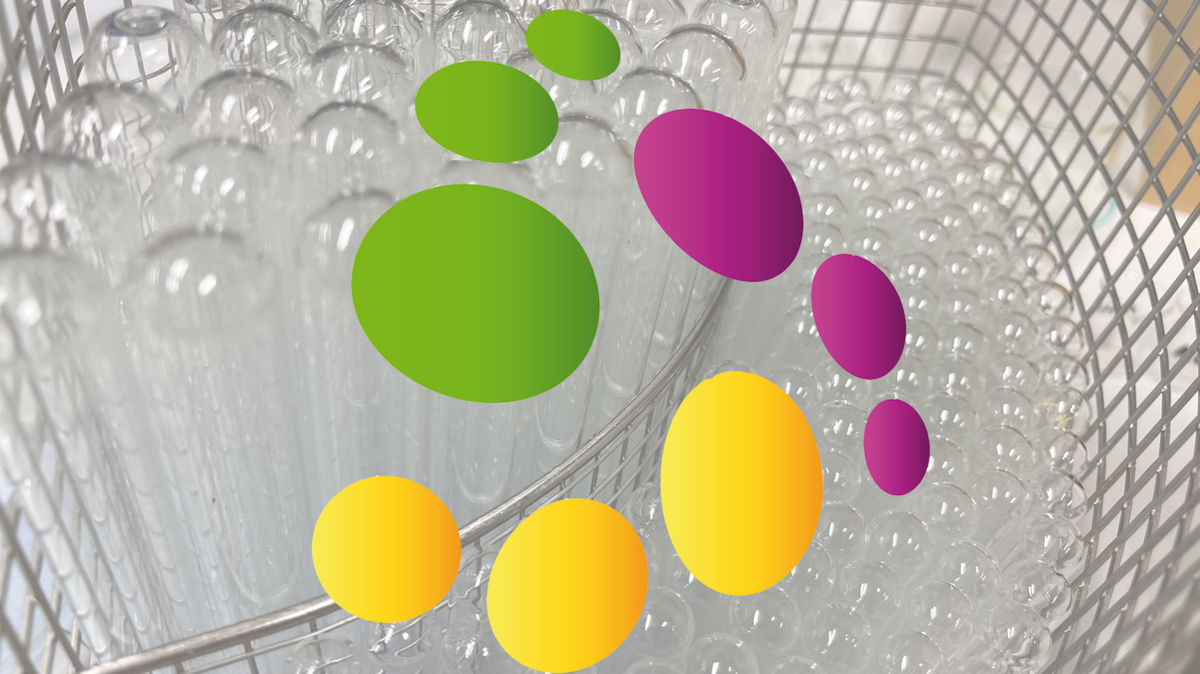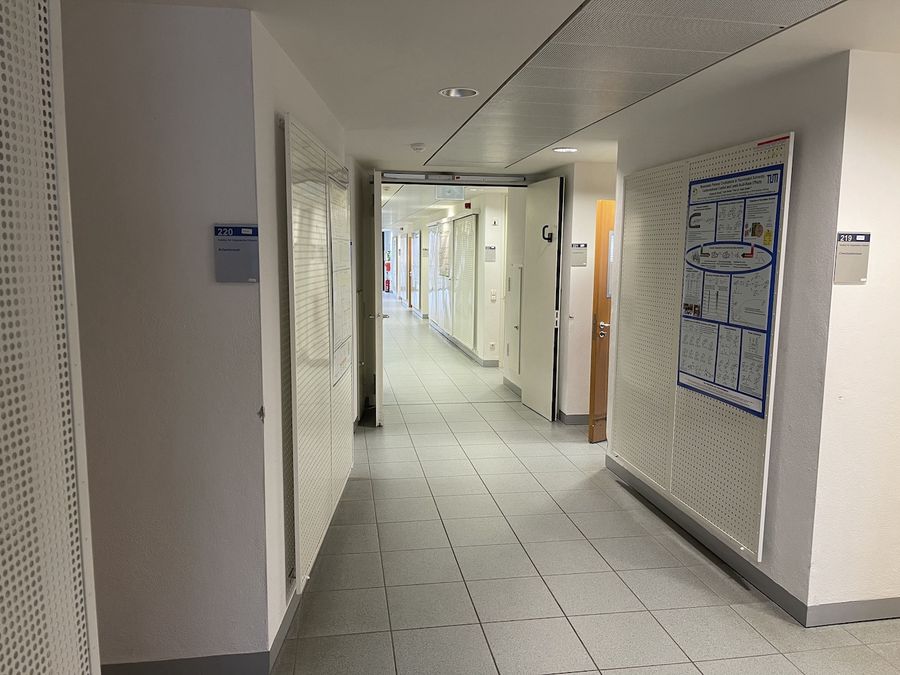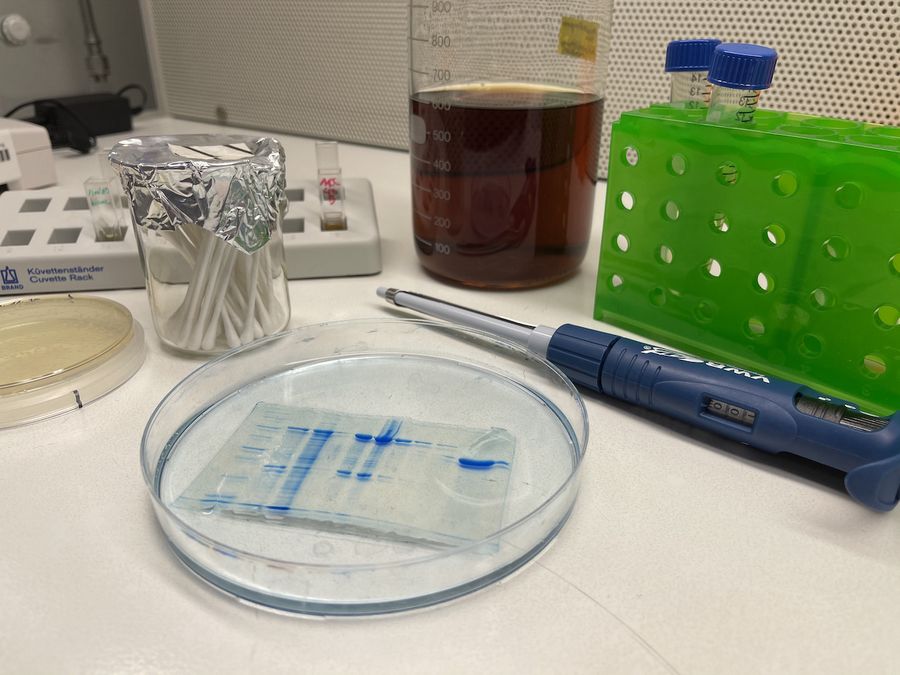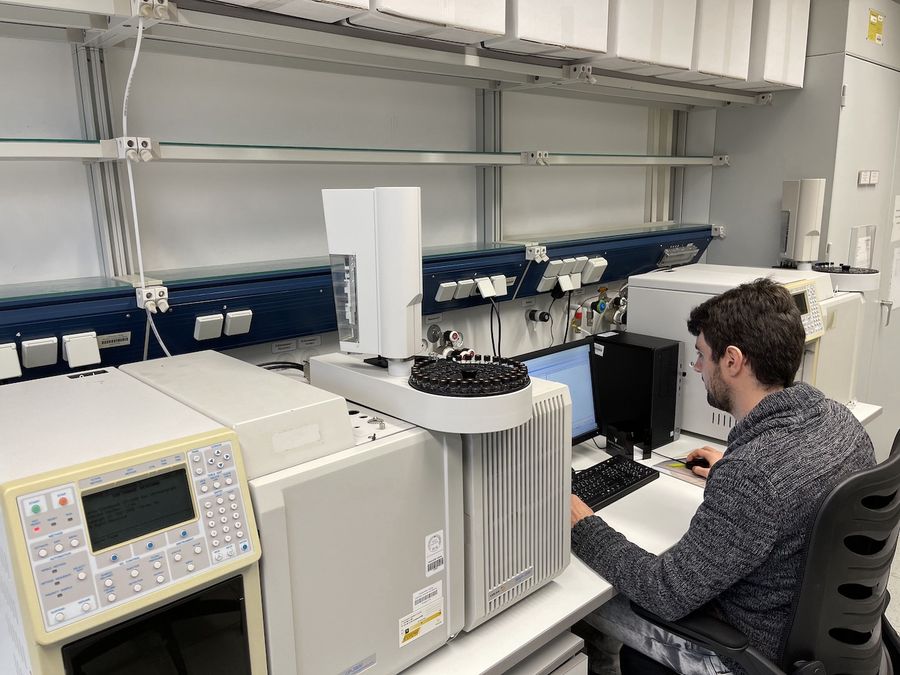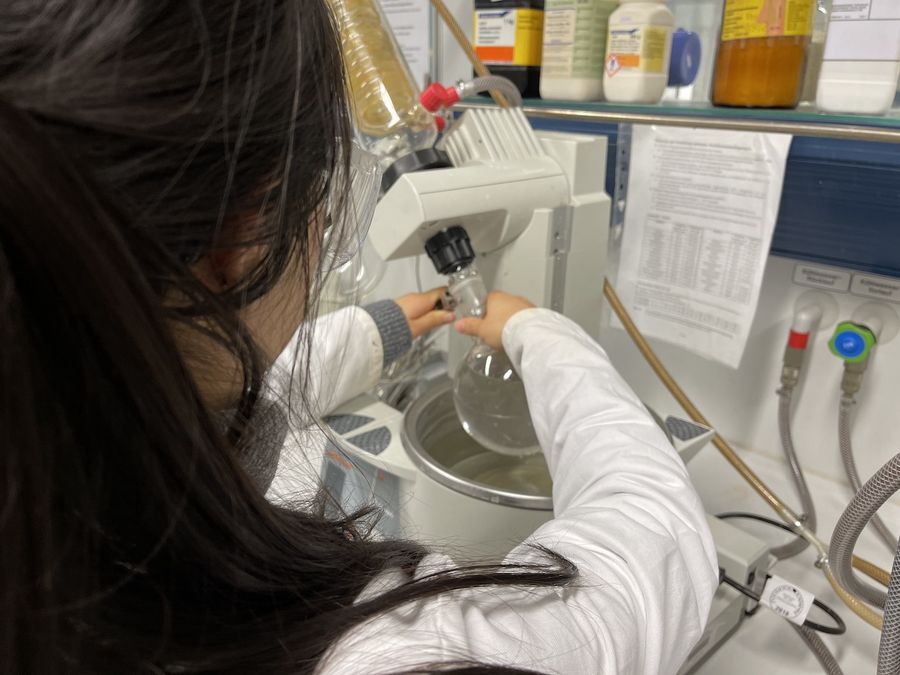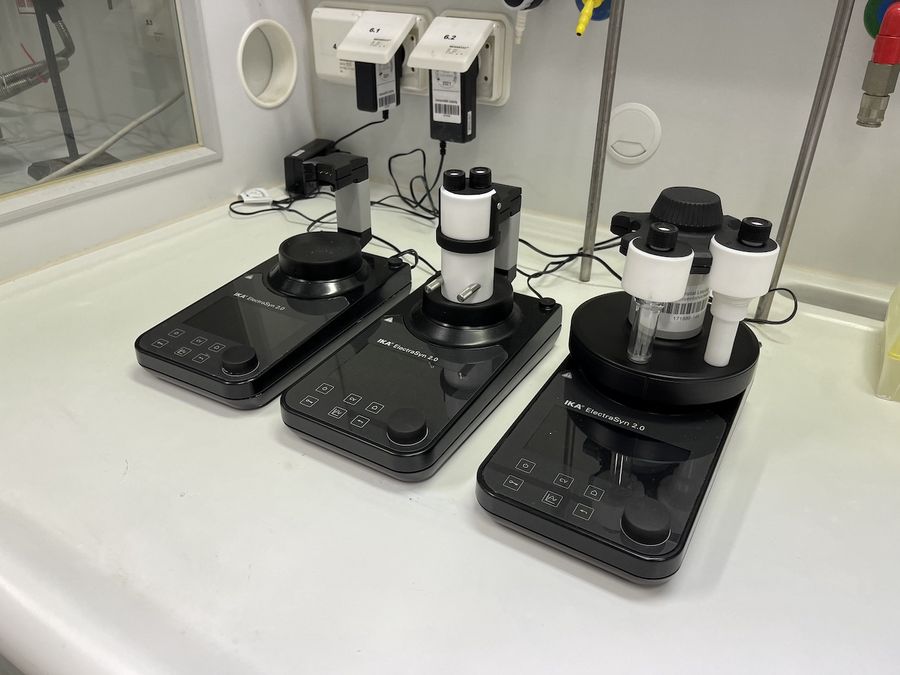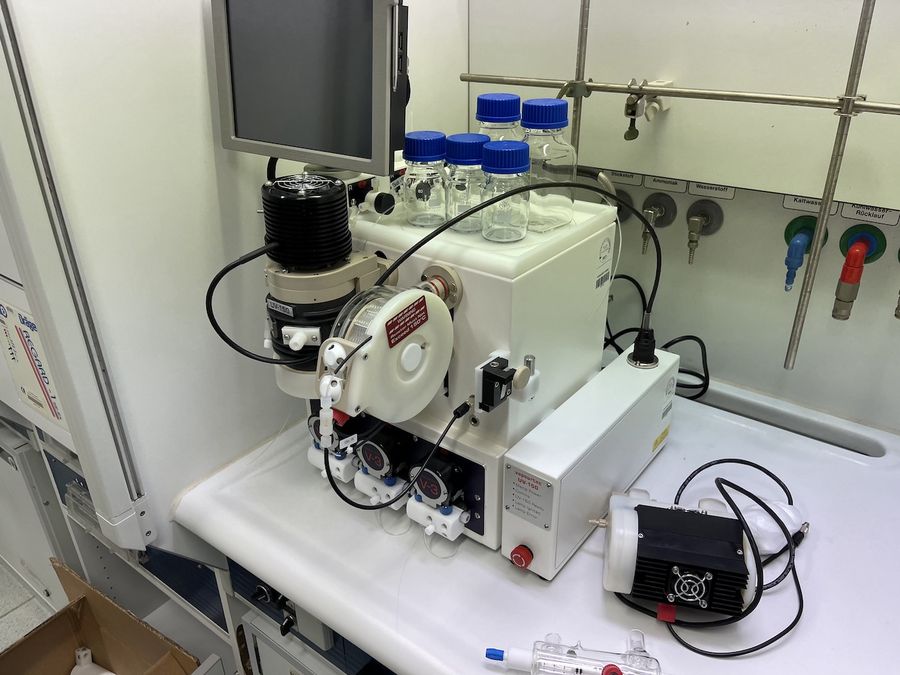In our group, we are focussed on all kinds of halogenated compounds, their properties and how to synthesize them in a mild and selective manner. We therefore set our focus on developing biomimetic synthesis methods.
Although the halogenation of organic molecules is one of the most widespread techniques for the functionalization of substrates, efficient catalytic methods for the selective installation of halogen atoms are rare. Our research program therefore addresses the long-standing problem of catalytic halogenation. Nature has developed different strategies to catalyze these types of reactions with high chemo-, regio, and stereospecificity. By exploring and emulating Nature’s concept, new catalysts are elaborated, which allow for the development of mild, generally applicable, and selective catalytic methods for the formation of carbon-halogen bonds, thus adding a particularly advantageous tool to the arsenal of methods in modern synthesis. With the application of these catalysts, novel compound classes with unique structures and potent biological activities are easily accessed, expanding the boundaries of chemical space, which will contribute to the discovery of new lead compounds and has the potential for the development of new drugs and theranostic biomaterials.
Projects
Many of our biomimetic halogenation efforts employ iodanes as mild halogenating agents. Our first efforts in this direction started in 2012 when we published our iodine(III)-catalyzed bromocarbocyclization synthesis of 3,3-disubstituted oxoindoles.[22]
Building upon those initial findings, we were also able to employ iodanes to synthesize α,α-dialkylated α-hydroxy carboxylamides[32], fluoro benzoxazepines[33] and α-hydroxy-β-amino acids[36]. We were also able to use fluoro-iodanes to facilitate α-functionalization of ketones via a nitrogen directed oxidative umpolung[48].
Our current efforts are focussed on achieving the catalytic, electrochemical iodane-formations as well as delving further into the development of new, enantioselective halogenaion methods.
[22] D. C. Fabry, M. Stodulski, S. Hoerner, T. Gulder; Chem. Eur. J. 2012, 18, 10834-10838. Fulltext
[32] A. Ulmer, M. Stodulski, S. V. Kohlhepp, C. Patzelt, A. Pöthig, W. Bettray, T. Gulder; Chem. Eur. J. 2015, 21, 1444-1448. Fulltext
[33] A. Ulmer, C. Brunner, A. M. Arnold, A. Pöthig, T. Gulder; Chem. Eur. J. 2016, 22, 3660-3664. Fulltext
[36] C. Patzelt, A. Pöthig, T. Gulder; Org. Lett. 2016, 16, 3466-3469. Fulltext
[48] G. M. Kiefl; T. Gulder; J. Am. Chem. Soc. 2020; 142, 20577–20582. Fulltext
During our studies, we became increasingly aware of the unique properties of flourinated alcohols like HFIP (Hexafluorisopropanol), TFE (2,2,2-Trifluorethanol), and PFTB (Perfluoro-tert-butanol). We were especially pleased, when we observed a very distinguished improvement when employing HFIP as the solvent for our biomimetic haliranium-induced polyene cyclizations, which are traditionally quite difficult to achieve.[42]
We ascribed this effect to the HFIPs ability to form microheterogenous, supramolecular assemblies which we proposed to be able to pre-arrange the substrate of the reaction in a favourable conformation.
We are now focussed on further investigating and characterizing these interactions and utilizing supramolecular assemblies in other reactions, such as photochemical transformations etc.
[42] A. M. Arnold, A. Pöthig, M. Drees, T. Gulder; J. Am. Chem. Soc. 2018, 140, 4344–4353. Fulltext
As we are trying to mimick nature by establishing biomietic haloganeation reactions, we are naturally interested in closely investigating how exactly nature performes these challenging and quite rare transformations. One type of halogenating enzymes we are especially interested in, are Vanadium-dependent haloperoxidases. We were able to characterize a cyanobacterial haloperoxidase, AmVHPO, and evaluate its biocatalytic halogenation potential.[38]
From there, we were also able to establish a photobiocatalytic halogenations by using atom‐economic electron donors for the haloperoxidase.[44]
Right now, we are trying to widen our scope of available halogenating enzymes and are investigating biosynthetic pathways of halogenated natural products.
[38] A. Frank, C. J. Seel, M. Groll, T. Gulder; ChemBioChem 2016, 17, 2028-2032. Fulltext
[44] C. J. Seel, A. Králík, M. Hacker, A. Frank, B. Koenig, T. Gulder; ChemCatChem 2018, 10, 3960-3963. Fulltext
